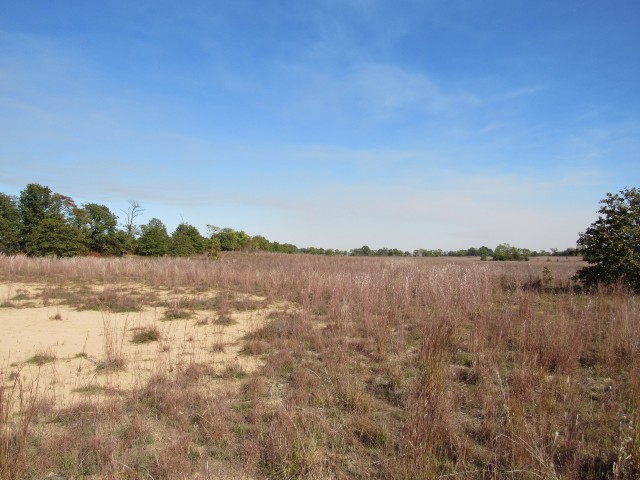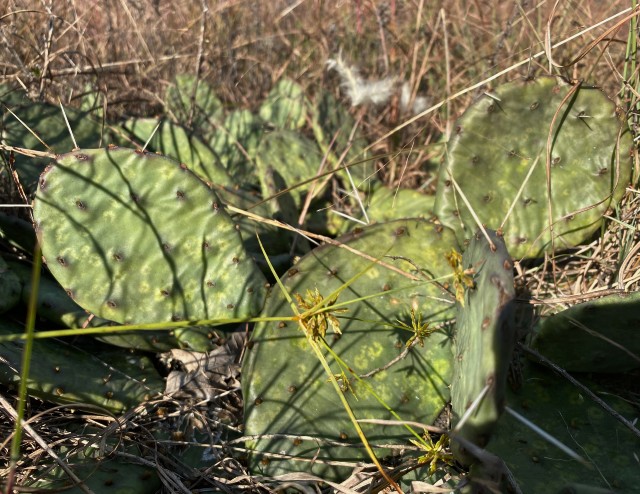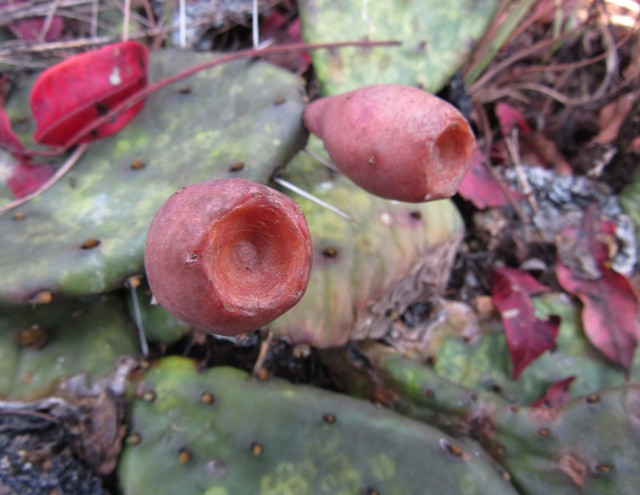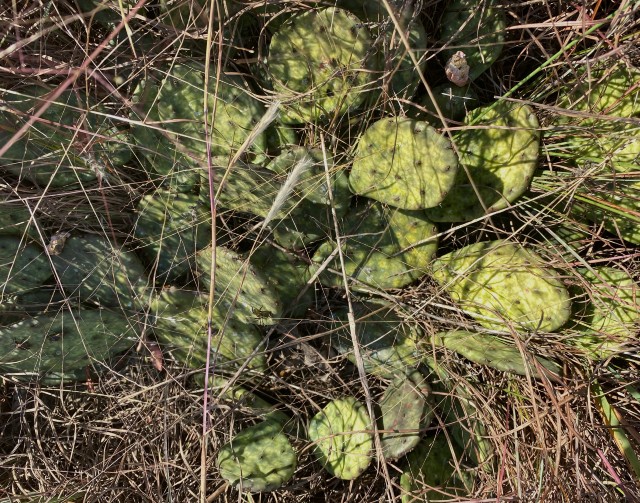While visiting a sandhill prairie in Missouri in October, I saw a fair number of these plants. Prickly Pears are considered an old group within the cactus family and contain around 150 species. Like other cacti, its fixed spines and small, hair-like prickles readily adhere to skin or hair, then detach from the plant.
It has the largest range of any cactus in the United States and can be found from New Mexico and Montana east to Florida and Massachusetts. Because of special antifreeze chemicals in its cells, it can survive the freezing temperatures of the northern states where it resides.
It some situations it can form large colonies, while in others it may occur as a few individuals in an area. Eastern Prickly Pear is a typical cactus in that its photosynthetic stem (also known as a pad) acts as a leaf. This stem also stores water.
Generally the plants are no more than a foot and a half tall and tend to sprawl on the ground. Their flowers are produced at the ends of its pads in early Summer. The flowers are usually yellow, but east of the Appalachian Mountains and on dunes, the center is often red to orange.
After flowering, a red, egg-shaped fruit begins to appear. The fruit is edible and can be eaten raw after removing the skin. Jellies, candies and other sweets are often made from the fruit, while some people also snack on the fleshy pads of the plant. Prickly Pear as been a Mexican and Central American dietary staple for thousands of years.
This cactus grows in open, dry areas, often in rocky or thin soils. It can be found in or on fencerows, roadsides, rocky glades, rock outcrops, cliffs, old quarries, dunes and prairie. Its roots need to be dry during winter to prevent rot, so well drained sites are necessary.






